In this post, I’m going to show you how to find a profitable niche for your blog.
(Step-by-step)
In fact, this process has helped 51,518 students start blogs they love and get on the path to profitability.
You’re about to learn how to…
- Avoid burnout by brainstorming niches you love.
- Clarify your strongest, most reliable skills.
- Niche down by merging your passion and abilities.
- Discover niche topics.
- See if your niche is future proof
- Find lucrative merchandise to help monetize your blog.
- Launch a profitable blog in a niche that you love.
Plus: a bonus niche video course that’s now 100% free.
Let’s dive in.
How to Choose a Blog Niche

This first step is where most people throw their hands up and fold.
But it’s actually much easier than you realize to choose a foolproof blog niche that makes money.
Most people vet hobbies and interests and create looonnnggg lists in their mind when starting a blog topic search. But, instead of a fierce fire lighting them up, this quickly feels overwhelming.
Does this sound familiar?
Let me just call you out right here and now: Fear is what’s driving you. Instead, you need to look at choosing a blog niche as an opportunity.
The sooner you get out of your own way and use advice that works, the faster you’ll start seeing results — monetary results.
What Do Successful Blogs Do?
Look, there’s no rule that says you can’t add topics as you grow. But, first, you need to start your new blog.
News flash: It’s what most smart bloggers do!
Allow me to explain.
Your perfect new blog niche sits at the intersection of three key ideas — passion, knowledge, and profitability.
As long as you’re passionate about the topic, have a considerable level of knowledge, and you’ve researched that many people are demanding this type of expertise, any of your blogging ideas have the potential to net you profits.
Look, you need to know:
Success is not a secret, it’s a system.
And you’re going to use this simple system to finally start the profitable blog you’ve been dreaming about.
Ready? Let’s begin with storming that ol’ brain of yours.
Step #1: Brainstorm Niches You Love

As you start thinking about potential niches, make two lists:
- Things you’re interested in, and
- Things you’re knowledgeable about.
Aim for about 10-20 topics in each list.
Why?
Quite simply, the best blogging niche is one that you’re naturally passionate about or interested in.
Writing about a topic you have no affinity for is a fast recipe for burnout.
(P.S., If you’re new to blogging, people can feel your lack of passion in your writing. So even if a blog topic is “profitable,” your personal interest and passion always come first.)
However, if you feel like you haven’t found your “passion” yet, don’t worry! Blogging ideas you’re passionate about aren’t always super obvious.
To help you get exhaustive with this first step, uncovering your interests and passions, here are a few ways to spur your soul-searching:
- Think about things you regularly talk about with friends or co-workers. You could even ask your friends and workers to point out what you’re passionate about.
- What do you feel comes up in your conversations most naturally?
- Browse through your most recent purchases and take note of the items that come up more than once.
- If you’re a game-geek, that might be a table-top version of Game of Thrones.
- If you love journaling, it may be calligraphy pens and a BuJo.
- Yogis will grab everything from mats, to apparel, to nootropic supplements.
- Your passions are hidden in everyday places, so scour your Amazon purchase history and other online merchant receipts, and you might end up revealing a deep passion.
Passions, hobbies, and interests are developed over time, as you explore and try new things.
Many bloggers end up writing about blog post ideas that, at some point in their lives, didn’t sound even remotely interesting.
And if your initial list of blog topic ideas is large, good job! You just 10x’d your chances for success!
The main key here is: A blog is like a marriage. It takes consistent work over long periods of time to make it blossom.
Honeymoons are fun, but they don’t last. You have to associate yourself with a niche you will remain interested in.
You want to continually learn more to stay a few steps ahead of your readers.
Here’s a question to start thinking about Step Two:
What do people come to you for advice on?
Step #2: Clarify Your Strongest, Most Reliable Skills

What comes easily to you? How do you help others?
Now, think about topics that you could write about based on your experience at a job or with volunteer work.
At this point, don’t bother editing or censoring yourself. Just get those creative and associative juices flowing. Pre-judging whether they’re “possible” or not is a waste of time at this stage.
Also, you don’t want to start discounting ideas just because you’re still learning. Many bloggers write about things as they’re learning. (And let’s be honest, we’re always learning.)
What long journey are you in the middle of accomplishing?
Raising children, learning how to brew beer, roast coffee, lose weight, or becoming a rock star?
These can be your strongest skills, even if you’re still learning.
Vet Yourself
This may be the hardest to do, and it may provide the fuzziest of data. What seems so obvious to us now wasn’t always so. Do you remember what you were searching for five years ago?
Neither do I.
Which is why I turned to the Bookmarks section.
As a beginner, I had all sorts of questions and I relied on — big surprise — the Internet and social media to give me the answer. Even a curious infographic got tucked away if I found it thought-provoking.
Do the same due diligence for your resources.
Survey your bookmarks and take note of the content that comes up. This will give you a clear direction about what you found valuable as a beginner.
Actually, some of the most awesome ideas for bloggers bloom from bookmarks, personal and career experience, rather than just one-off “passion” or interest.
Follow these intuitive hits because they could quickly develop into something that checks off two parts of the three-part success cocktail when you want to start a blog:
Knowledge and demand.
Step #3: Narrow Down and Niche Down

This is the part where you’ll narrow your ideas on blogging and hone in on a few niches to research.
We’re getting closer and closer to nailing your profitable blog niche.
By now, you should have topics listed in two categories —
- Niches you love, and
- Niches in which you have experience.
Your ideal blogging topic should intersect both categories.
It’s now time to start a third list.
Mark down at least 10 topics that appear in both lists. You’ll focus your research on these to make test profitability.
A word of caution: If you start a blog in broad topics like “health,” “food,” or, “making money online,” you’ll want to come up with more specific niche ideas.
Let’s dig a little deeper.
You can break “making money online” down into specific niches. People need guidance in freelance writing, running a VA business, or making money on social media.
Like a matryoshka doll, you can then crack each of these into more specific ideas for a whole new level of sub-topics, content ideas, and expert direction.
However, if you’re adamant about sticking with a general niche topic, fear not.
Just make sure to go narrow on your target audience instead!
This will give you clear direction and focus for a blog post. For example, if you choose “health” as your blog niche, maybe you want to focus on postpartum moms because you have personal knowledge or experience in this area.
Postpartum moms will have different health or fitness concerns and questions than moms-to-be.
So let this guide your blogging niche ideas.
To help spark some ideas with inspiration, make sure to browse the profitable blog niche examples I’ve compiled for you at the end of this post.
You’ll see that many successful bloggers go broad on topics of blogs, but they still have a good niche. Instead, they “niche down” on their target audience, and so they still remain profitable.
However, to reach that goal, you want to start as they did: choose a profitable niche topic, one that is ripe and ready for you to make your mark.
We’ll look at search results, trends over time, content ideas, and online products to make sure that the blog niche you choose is the blog niche that brings in the big bucks.
So let’s get down to the business of starting a blog in a proven niche topic.
Discover High-Profit Niche Potential

You’re going to take all those juicy, third-list ideas and test them for profitability. Your focus in this step-by-step blogging niche finder is to answer a simple question:
Can I make money from blog posts in this niche?
The answer to that weirdly existential question will require you to look for these overarching indicators of success:
- How can you find a neverending list of topics in your niche fast so you can stay consistent with blogging?
- Is your niche trending steady or is it on a downturn?
- How competitive is the niche you’re contemplating? (P.S., Competition is a good thing when it comes to blogs, and I’ll show you why later on)
- Are there products and services you can monetize on in your articles?
Here’s the thing:
There’s more than one angle from which to approach a blog niche topic’s profitability and viability.
It’s all about researching multiple factors, including current competition, search intent, historical trends, and profitable products. These are your “angles,” so don’t skip a single one.
Let’s begin with the most important:
Are there topics in your niche you can find fast to start blogging?
See, you want to blog in a profitable niche where many people have a lot of questions they need to be answered, or which include blog posts with the information they’re clearly seeking out.
Your goal is to discover what these questions are, what your readers are searching for, and what they’re having trouble with. And then present your blog as the solution.
Ta-da!
Here’s how to find out.
Step #4: Harness the Google Gods
Since Google is the first place you turn to when you’re trying to figure out if your headache is a sign of cancer, why wouldn’t it also be the first place you rely on for a blog topic?
Google can be a true data-miner’s dream for creative direction, clear next steps, and content ideas.
Let’s start with a quick search for blogging niche-related content and questions.
Take one of your topic ideas from the third list and get cracking. To get started, you want to pop in this topic idea in a Google search and see what comes up.
For instance, if you want to blog about dieting, you’ll start by putting yourself in a dieter’s shoes — what questions would they be looking for or thinking about?
One thing you should know: Google searches reveal a lot more than page results when you know what you’re going to look for.
There are three preliminary spots you’re going to focus on to zero in on what your target audience is hungry to learn more about.
Here’s the first place to mine this gold from Google for free!
Google Autocomplete
Let’s start with Google autocomplete. You already use this feature regularly when you do a personal search.
But when you start to look at Google autocomplete through the eyes of a blogger, you’re suddenly hit with an insane collection of potential blog topics you’ll want to write about.
Let’s say I start with a search for “diet.” I enter this one thing in Google’s search field.

Right away, as I type, Google offers me up a list of search terms related to the keyword, “diet.” I can see that “diet plan” and “diet to lose weight” are popular terms people search for. The search volume is high so
That’s great news because, as I start writing, these are the words and blog topics on which I’ll focus.
Google’s recommendations give you the power to get even narrower with your search.

“Diet for” turns up some even more specific ideas that I can address on my blog or actually niche down and make my blog entirely revolve around “diet for diabetics.”
These are your target audience’s searches and you can use them to guide your blog content. Let’s say that I don’t want to narrow my focus by topic but by demographic. So, instead of diets for diabetics, I want to include all kinds of diets for women.
In this case, your audience is searching for “diet for women.”

Google auto-fills the search field so you can then get more specific and valuable results.
Let’s focus on “diet for women with PCOS.” Reviewing this search term gives us some ideas on related topics and keywords.
Now it’s on to snippets, and related questions and search next.
Find Niche Questions and Blog Topics Fast
The next level of Google power lies in tracking the questions your audience might have. Clicking on the dropdown for some of these fields will cause more questions to appear.
Now, these aren’t just suggested terms. These are actual questions that your target audience searches for, and you can use these questions as actual post ideas.
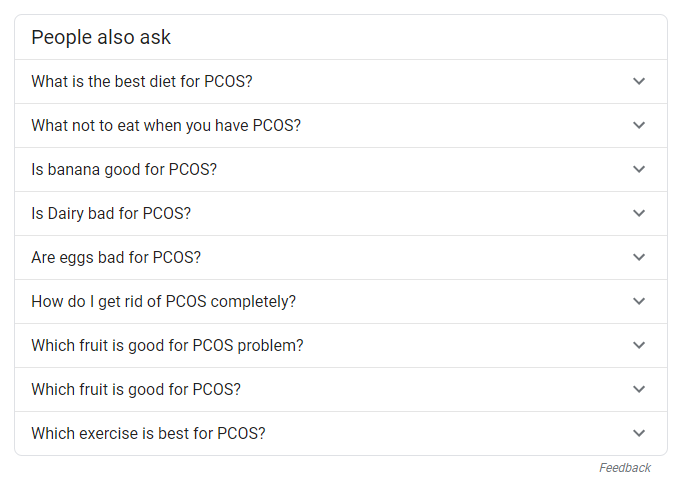
For example, the related question and search term, “What is the Best Diet for PCOS?” can be your first, real blog post published on your blog.
These related questions are essentially your content calendar, all nicely queued up. And the moment you set up your blog, you can attract your ideal audience with these exact posts.
The third place to mine gold from Google is the “searches related to” section.
Scroll down to the bottom of your Google Search results.
In this “PCOS diet for women” example, the bottom of the Google page features additional, related topics. Not only are these clear topics that people really want to learn more about, but they also fall right within your niche so you can cover these in your blog.
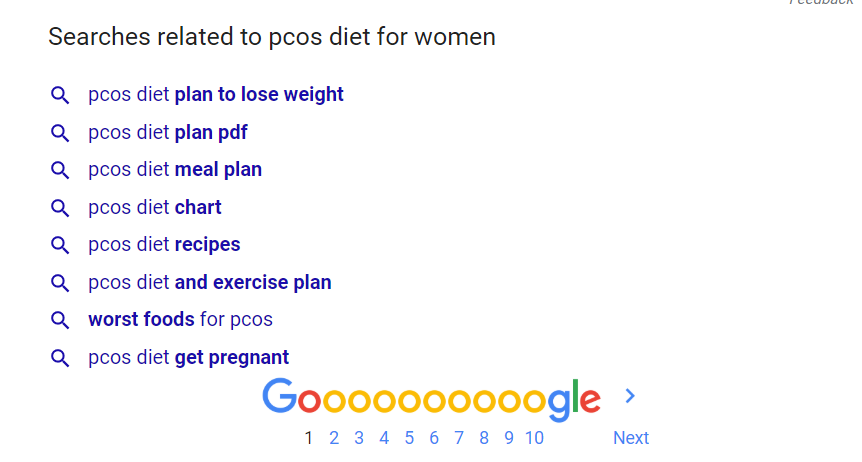
In minutes, you’ve literally cut down on the time and effort it takes to do relevant research for your blog niche. No more spending months wondering what to write about — you should have at least 5 to 6 niche blog ideas (and more) ready to go.
Next, let’s check to see if your niche is going to be around for a while.
How do you do that?
With Google Trends.
Step #5: Google Trends
In the early stages of your blog niche ideas research, you’ll want to make sure your niche isn’t hitting a downtrend. Of course, all niches, at some point, can hit a lull, so you can also look for data that suggests it will rise again.
Google Trends is the tool to use to gain insight into the performance of certain topics over the years.
Remember, a profitable blog niche is also an evergreen one.
Here’s how to do it.
Start by going to the free Google Trends tool.
Next, plug in a question or phrase you gathered from your research, and change the “timeframe” to the past 5 years, like so:
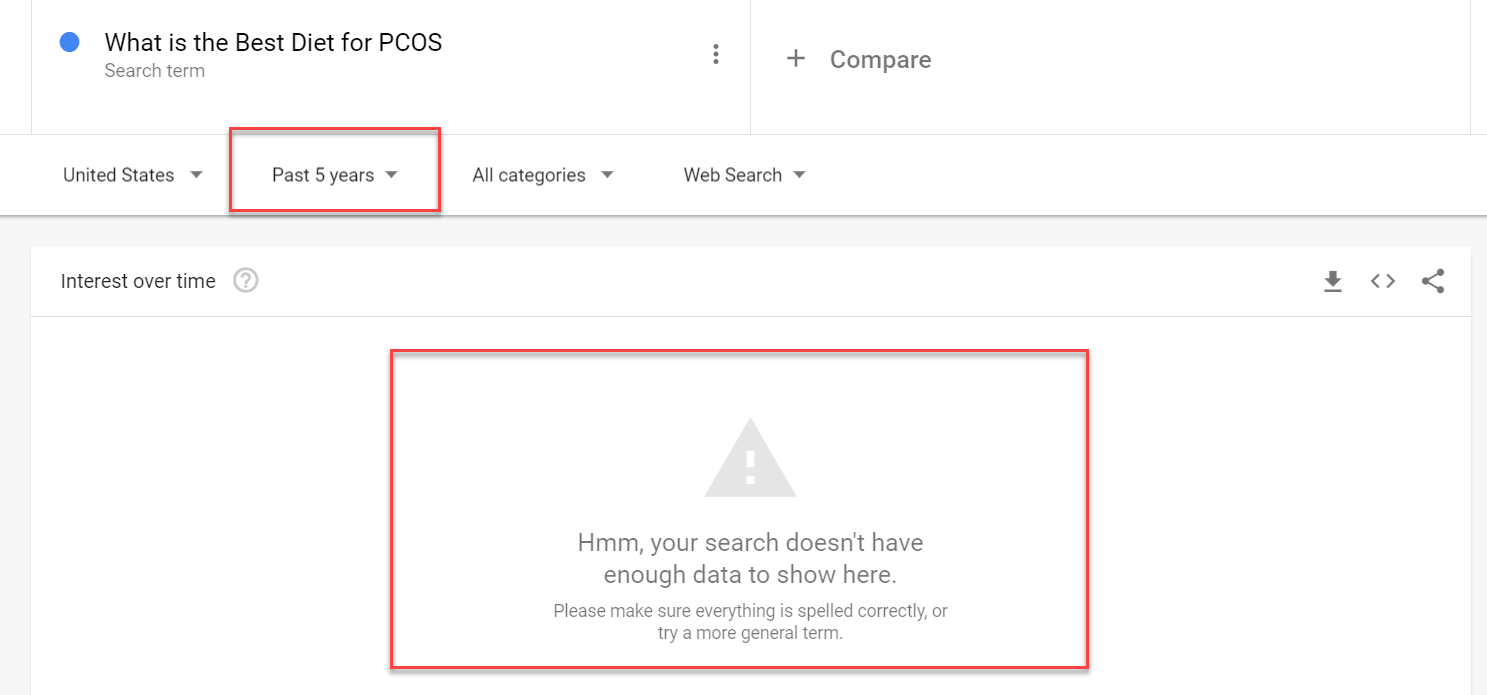
Fact: Even no data is data. It’s telling us that this exact phrase does not get a high amount of searches.
So even though your Search Recommendations netted a slew of search terms, does this lack of data over the years spell failure of a niche?
Not at all! You just need to get a bit creative.
Simply shorten your question until data begins to appear. All you need to do is wrangle the question and change some of the words around until you see some evidence of data.
Note: Think of how people would put this “question” into google to search for an answer like this,

You can see clearly now that this “niche topic” is neither increasing in popularity nor decreasing in demand.
Conclusion: You’ve hit a stable niche, which will remain nice and steady for years to come.
Boom!
Plugging in a combination of phrases related to PCOS diets makes it even more apparent that this is a niche with longevity.
Interestingly, the term “PCOS symptoms” is increasing in trends. That’s even better news for you.
What it tells us is that there’s a possibility that many potential readers are still unaware of PCOS as a reason for their weight loss or pain struggles.
And guess what?
This translates to a high number of visitors and consistent traffic when you choose a niche that’s steady.
Your blog gets to be the transformation point between your readers being unaware and becoming totally educated. It’s an even better sign of an upward trend that will rise in the future.
Now that you’ve secured your future profitability, let’s shift to making a start right now.
It’s time to hit another powerful source for blog niche content ideas. This freemium tool connects powerfully to monetization opportunities.
I’ll show you how.
Step #6: Answer the Public
Before you use this tool, you should know:
You only get 2-3 free searches per day as a guest, so you don’t really want to waste your search time.
Pay attention:
Choose a “short phrase” in your potential blog niche. Double-check the popularity of this phrase on Google trends. It must be the “most popular.”
Let’s say we focus on one niche, “tabletop games.”
The results you’ll receive with this tool are likely going to be more “broad” than what you want. But that is not the focus of this tool. Instead, it’s all about helping you to refine topic ideas.
Go to Answer the Public, enter your short phrase, and then hit Search.
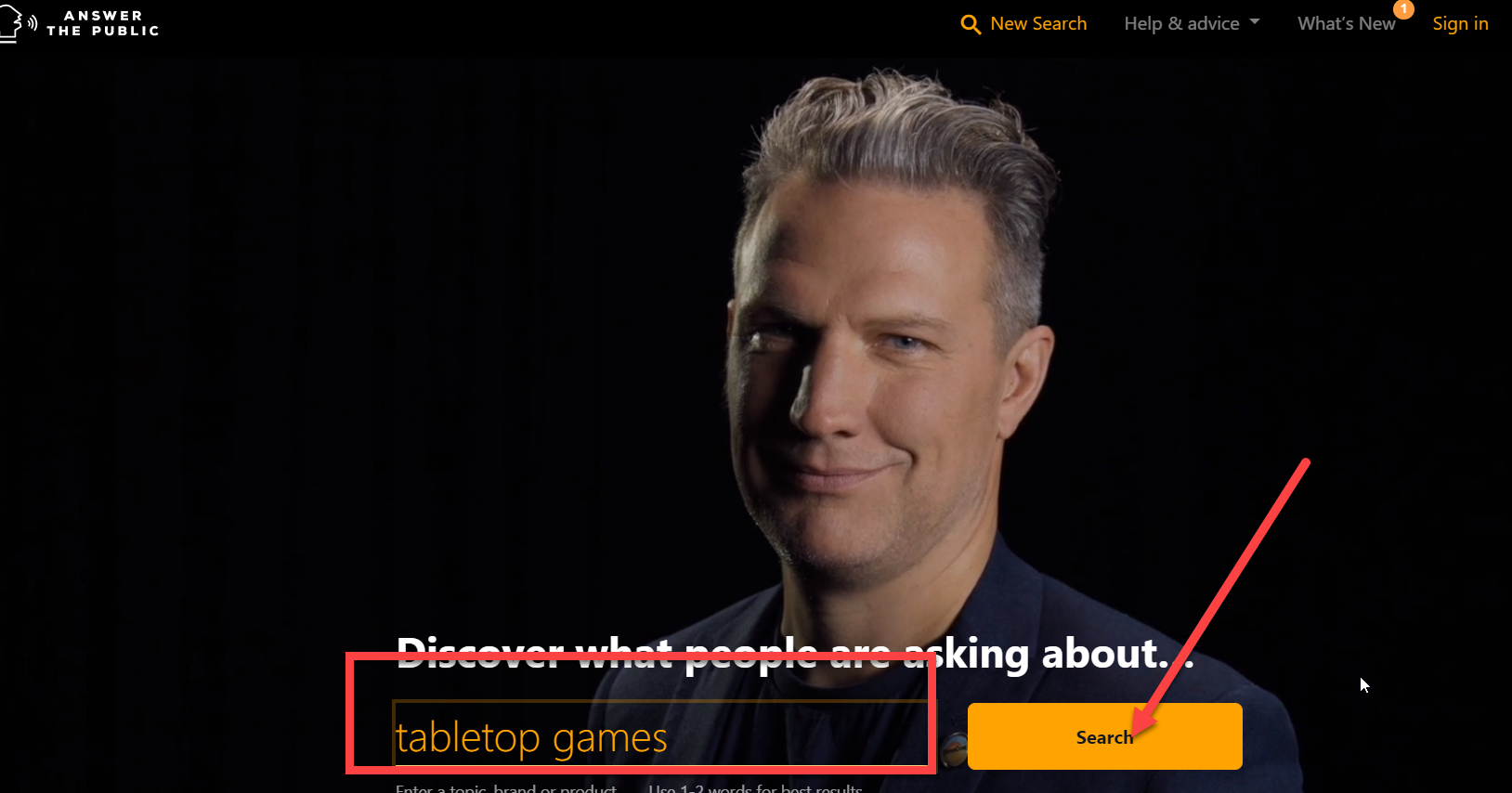
What’s great about Answer the Public searches is their option to view data either visually or as a table. Visual is nifty, but I recommend you use the chart view so you can get an idea of the sheer volume of options.
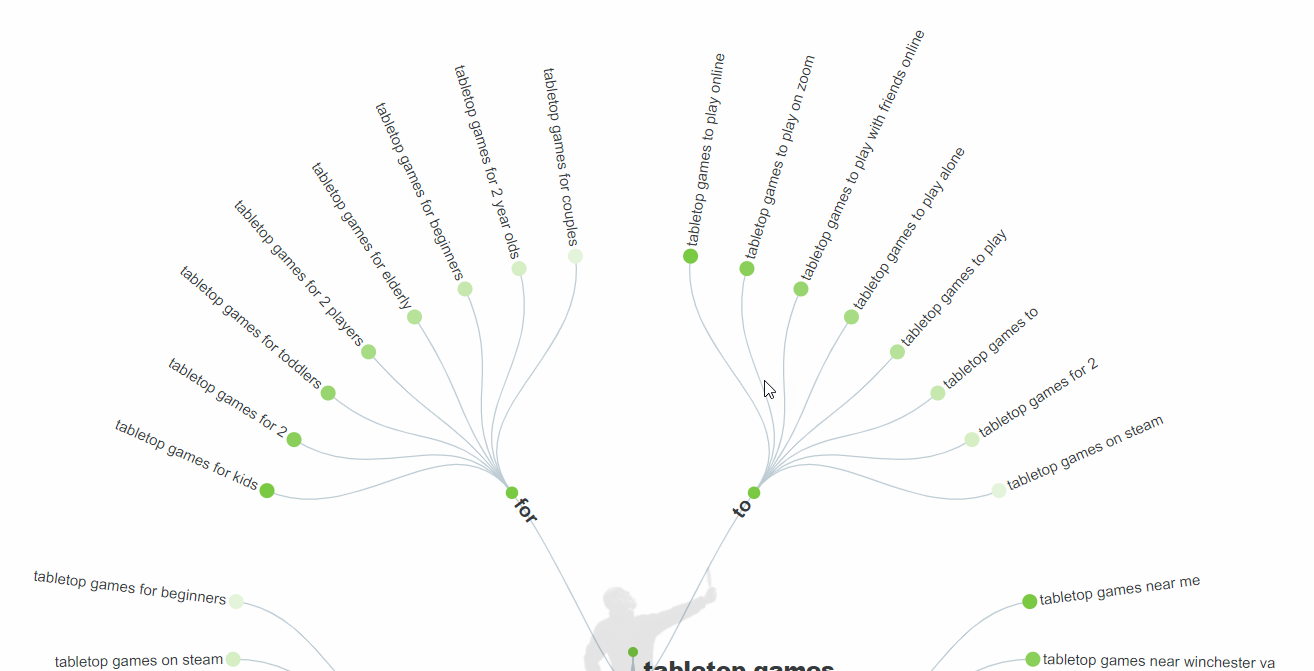
Click the “Download CSV” button at the very top and open the file. Every cell is a juicy blog idea — combine them all and you’ve got more content than you can publish in one year!
Quickly scroll down this list, marking an X or highlighting the cell to signal the ideas of focus. You can return to this list and quickly write blogs about these ideas with the least amount of research.
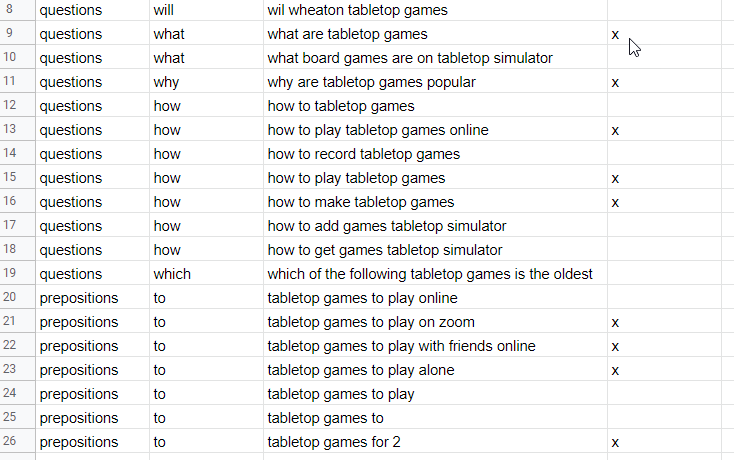
Why is this action step so important?
Once you complete it, you get the full picture.
For the first time, it dawns on you —
You can start a blog with clear direction, within a niche you actually love.
But how do you make money from a blog niche you love? Read on, soon-to-be-blogger.
I’ve saved the best for last.
Step #7: Profit through Products and Posts
Hear me out —
Browsing the list of Amazon “Best Sellers” may not be what first pops in your mind. But don’t throw it out.
The best-sellers collection gives you a general list of related items in your niche.
For example, the brand name Nintendo is a top seller in the “Electronics” section for its console, the Switch. If your blog falls within this niche, you also can go beyond just the consoles to games, accessories, and many more items.
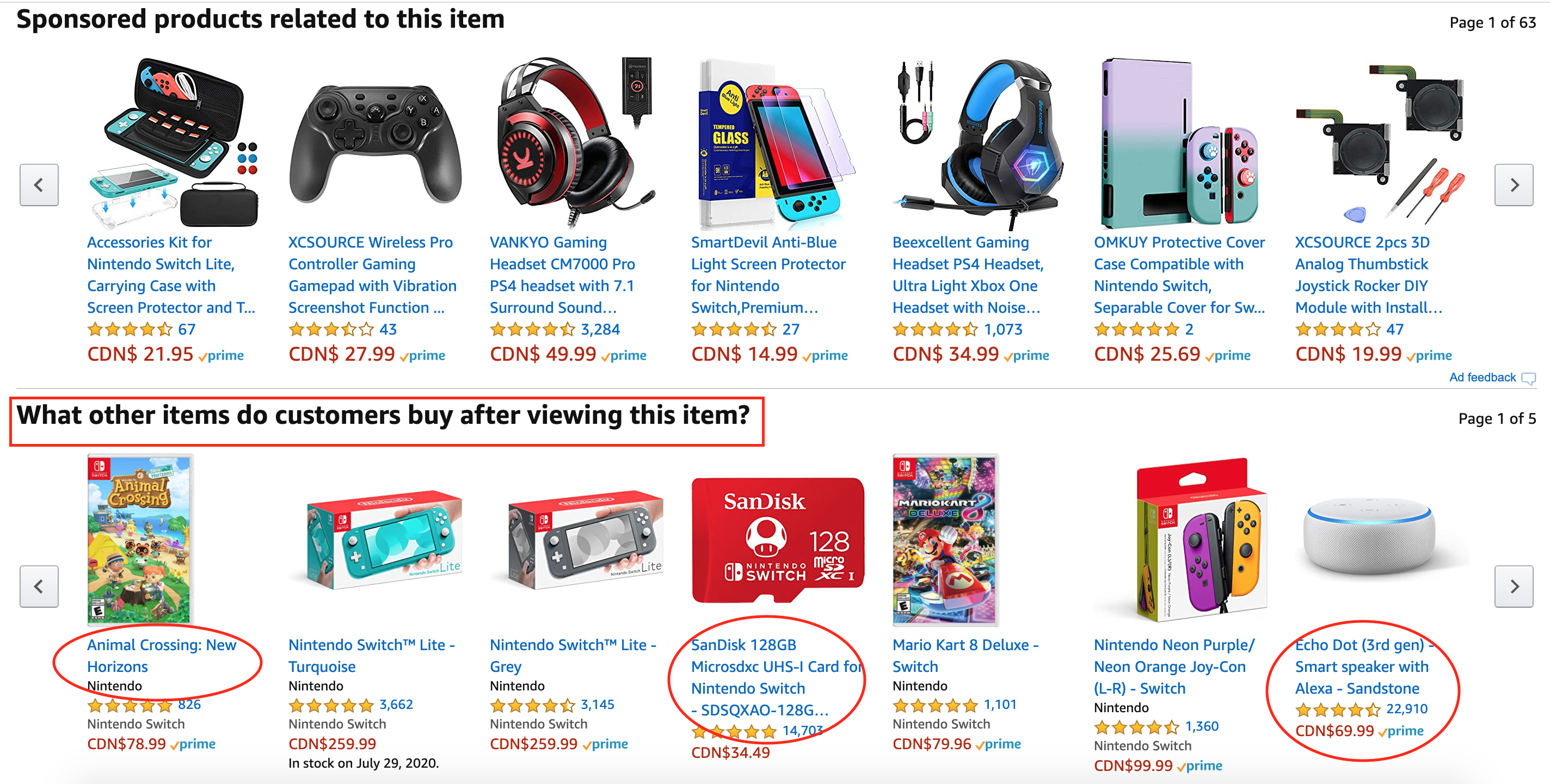
To make the most of this, you want to do two things:
First, take a look at the reviews for some of the more popular products. You can use these for future product review posts for your blog niche.
(In a minute, I’ll show you how to use these to generate income through your blog’s recommendations.)
Secondly, scour the reviews for valuable direction in your blog content.
Reviews reveal what problems people face, what pains they’re trying to solve, and which products are actually working.
Not only does this give you ideas for blog topics, but it also gives you the actual words you can use in your content to make it valuable!
(22 people found the Amazon review below helpful!)

As if that weren’t enough, the power of Amazon does not stop there.
I’ll show you how to make the e-commerce behemoth a solid income source and a reliable partner in your blog niche monetization goals.
Let me explain:
I want you to think about any time you’ve ever purchased anything online.
Now think about reading a blog like any of your favorites. If you clicked through on something they recommended you’ve contributed to their blog earnings. The fact is, Amazon will reward you with a commission for leading potential buyers to their site.
If your readers purchase your recommended products using your special affiliate tracking link, you make money on the sale.
Even better, if they continue to hop to other products, beyond your recommended products, you’ll earn commissions on each of these items added to cart.
Let’s look at an example of how you can make this work to make money through your blog niche.
Remember my tips for using the Answer the Public tool?
Well, you can use the “vs” topic suggestions to create a blog post around two related but “competing” topics. A good example is squaring off tabletop games “vs” video games.

As your post walks the reader through the differences, benefits, and “cons” of each, you have the opportunity to incorporate links to Amazon products you mention.
“Versus” blog content is highly valuable to readers if it gives a clear and definitive conclusion on the best way forward.
87% of shoppers now begin a product search online to sort through the overwhelm and confusion of making a decision. Your content could be part of that clarity and decision-making process.
Of course, it’s highly valuable to you because it gives you the chance to make money from Amazon links.
Not only will your audience be inspired to take action and follow through on your recommendations, but your blog will also become their go-to resource for any future guidance they need.
You’ve just secured your opportunity to create future income through product links.
Amazon is only the tip of the iceberg, however.
There are other options like Shareasale, Rakuten, ClickBank, and FlexOffers that operate similarly to Amazon. These online retailers give you the ability to monetize your blog across a variety of niches.
As you progress, you can do some more research into factors like conversion rate, commission payouts, and the health of the companies that run these retail websites.
Right now, though, all you need to get started with is Amazon. As you expand, you can return to these other options to diversify and multiply your blog income.
Can You Test Your Niche?
Your brainstorming, researching, and narrowing-down efforts hereby complete the trifecta of passion, knowledge, and demand.
At this point, many would-be bloggers just like you want to know one important thing:
Can I test my niche, risk-free?
In other words, before you bounce to hosting, setting up your blog, and pushing your “Hello World!” post out there, how can you eliminate the feeling of just jumping into the deep end?
The bad news is, you can’t.
The only thing that gets rid of that feeling is if you take action.
The good news is that if you follow this formula, you can be strategic with your testing and minimize risk.
As this free Choose Your Niche course explains, the truth is you don’t need the “perfect” topic when you’re first starting. So if you know you have a great topic, but you’re missing a piece to the puzzle, don’t get discouraged.
As long as your topic fits at least two things — interest or knowledge, plus profitability — you have what you need to start a successful blog.
Profitable Blog Niche Examples
Having tons of resources for blogging out there is a double-edged sword. There’s a point at which resources can tip from helpful into overwhelming.
So, here are a few sites that have taken a broad niche and have appealed to a specific audience or found a more specific topic within that niche.
Nerd Fitness is a great site that takes a broad topic (fitness) and just puts it in front of a more specific audience (nerds!). It’s great to have multiple interests in common with your audience and drive engagement in this way.
Tarryn, from PCOS Diet Support, focuses on diet resources and meal plans for people with PCOS. She’s found a specific problem and developed a mixture of free content and paid products to help solve her audience’s problem.
Turntable Kitchen combines a love of food and music and delivers both in the form of music features, recipes, and vinyl subscriptions that come with recipes (or coffee).
Sheep & Stitch is a craft blog that focuses on knitting and has mostly beginner-friendly resources. There are lots of knitting sites out there, but not many of them focus so heavily on beginner resources.
Fall for DIY aims to provide resources for easy, affordable DIY projects that tie in home décor and fashion.
Note: To take a page out of these profitable blog niches, notice how quite a few of them intersect a section of interests. Turntable Kitchen, for example, combines food and music. It’s this cross-pollination results in a truly unique combination, which is perfect for a niche.
Is it Time to Pick a Blog Niche For You?

Eventually, it will be time for you to make your own decision. The aim of my proven process for picking a blog niche is to bring clarity and research to back up your “gut” instincts.
It all comes down to this.
If you want to build a successful and profitable blog, you need to enjoy writing about it, and your audience needs to gain value from it.
From here, it’s a matter of sticking to this 7-step system to:
- Discover your blog niche — Writers get told, “Kill your darlings!” all the time. What does that mean? Don’t get too attached to one idea. Stay open and let the creative juices flow. Be ruthless and cut out anything that doesn’t serve your goals of profitability.
- Validate the best one — The 7-step system is all about gaining validation for your idea to make money. Don’t be afraid to spend time running each of your seven to 10 ideas through this system.
- Launch your blog — Use the “Test Your Niche” section to get gritty and granular with learning more about how you can bring value to others, how you can improve existing content, and what types of blog content work well.
It’s really is that simple. Don’t overcomplicate it. Time is on your side — and, now, you have the proof to back it up.
The fact is, blogging continues to be a rewarding, profitable experience that changes people’s lives.
So get out there and just get it done!
Frequently asked blog niche questions:
What is a blog niche?
A blog niche is a specific topic that your blog content will focus on. The topics that you brainstorm in your niche research become your coordinates on the map of blog profitability.
How do you find your blog niche?
Finding a blog niche involves brainstorming your passions, hobbies, mission, and strengths to discover the intersection of those ideas that scratch an ongoing itch of a defined audience of people, a niche market.
How does a blog niche help you make money?
Defining a blog niche can take you from no tangible ROI for all your hard work to establishing an ever-flowing stream of blogging income.

